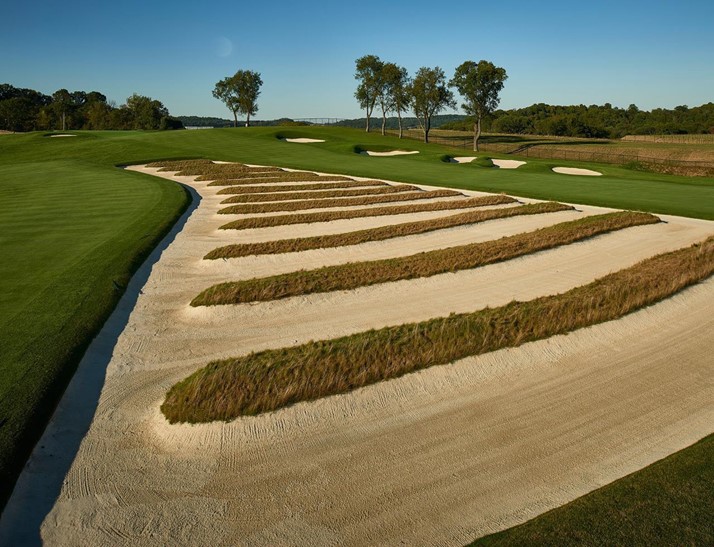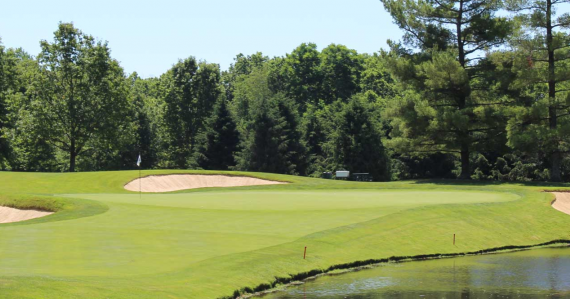
News
The Coomer Corner: The 5 Areas of the Golf Course

Written by Bill Coomer, PGA
Those of you who have been watching tournament golf on TV since the first broadcast of the 1947 US Open at St. Louis Country Club will appreciate how much the game has changed, not to mention the golf courses. From the black, white, and gray images, the ghostly and grainy live feed hovered on those tube-shaped screens and allowed us to follow the heroes of the game. Now we carry a device in our pocket or attached to our wrist that does the same thing but in clear and brilliant colors.
Even those commentators assigned to tell us what we are viewing have evolved over the last 76 years. I’m sure the first announcers would describe players shots with excitement and fervor at the crack of the club hitting the ball, the splash of the water as the ball entered, the swoosh of the sand in the trap and the clink at the bottom of the cup. I’m not so sure there are any better ways to describe the sounds of golf than those anyway.
That course in St. Louis has more than likely been altered a few times since the 1947 championship for any number of reasons. Our whole world is evolving and recreating itself every day. The hope is that we appreciate what was and what can be as new courses are built or an old property is renovated. The American Society of Golf Course Architect’s statement opens a window into what they are all aspiring to do from this remark:
“There are intangibles involved that come into play when a golf course architect reaches the level where he or she can apply both technical knowledge and artistic sensibility to create layouts that are strategically challenging and aesthetically interesting. It is to this level that most golf course architects aspire to reach.”
Looking into the video screen these days, the golf courses have obviously improved in quality of conditions, maturity, contours, maintenance practices and overall design elements. What hasn’t changed is the simple fact it is still just a piece of property on which to play golf. No matter if you are enjoying a round at St. Andrews or Sleepy Creek Muni, the rules of golf apply to every golf course the same way. There are certain areas where you can make a stroke at your ball and other areas where you may have to choose a different option.
The 2023 Rules of Golf define five different areas of the course and their primary roles. Forget about the old days of “through the green, water hazards and casual water.” The modernization of the rules has retitled those areas and others for the purpose of complete separation so that revamped rules of play will fit as well as a new suit.
- The General Area
Every type of ground and growing or attached object found such as fairway, rough, trees and wrong putting greens.
- The Teeing Ground
Defined area of the hole you are playing and is two club-lengths deep from the tee markers.
- Penalty Areas
Any body of water, such as lake pond, drainage ditch, either containing water or not or any other part of the course as defined by the Committee.
- Bunkers
Specially prepared area containing sand.
- Putting Green
Specially prepared for putting.
As a rule of thumb, you can always play your ball if it lies anywhere in the general area unless there is a need to use a relief procedure such as an embedded ball, immovable object, abnormal course conditions, etc. There is also a fairly new term that applies to the golf course. “No Play Zones” or restricted areas where you are not allowed to play from. You receive free relief from these zones, most of the time, but it is mandatory you do not play when your ball is in these zones.
As we know by now, you are able to do almost anything you wish when your ball is at rest in a penalty area. You can remove loose impediments, movable objects, make practice strokes and ground your club, and identify your ball if you are unsure. But remember to not move your ball while doing all these other things.
One of the most famous images of any golf course is the area of bunkers at Oakmont Country Club call the Church Pews. Even though the outline of this feature is designed to be a specially prepared area called a bunker, the grass and turf between each row of sand is actually a general area. So, the rules apply differently for the two areas. Grounding your club in the sand is a no-no but not a problem if the ball is in the grass or turf. Take a practice stroke in the bunker? That will cost you 2 penalty strokes. Take all the practice you want in the general area.
So, you see, it all depends on where your ball is on the course as to what you are allowed to do under the rules. Just remember the 5 areas of the course and you will find your way to the completion of the round with a lot less worry and fewer penalties!
Click here to read Rule 2 in full from the USGA





